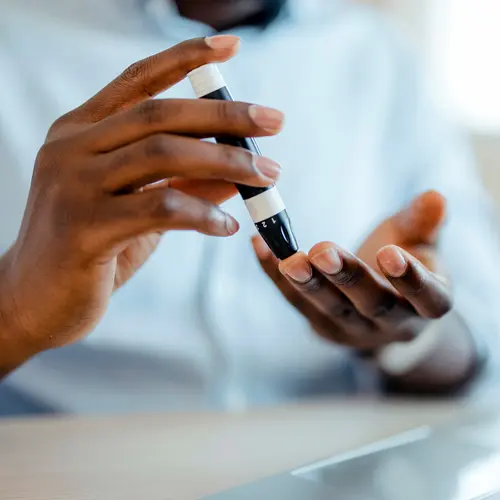An A1c test is key if you have diabetes or if your doctor thinks you might have a chance of getting it. It's a common blood test that gives information about your blood sugar.
What Is an A1c Test?
It’s the main way to find out if someone has diabetes and how they’re managing it. You might hear it called the hemoglobin A1c, HbA1c, or glycohemoglobin test.
The A1c measures your average blood sugar -- your doctor may call it blood glucose -- over the past 2 to 3 months. The results tell you how well your diabetes treatment plan is working or if you have diabetes.
It’s a lot like a baseball player's season batting average. A single game doesn't tell you how a player is performing in their career. One day's test results don't give you the complete picture of how your treatment is working.
You should have an A1c test at least two times each year if you have diabetes. It’s not a fasting test. You can take it any time of day, before or after eating.
Why Is It Important?
Your red blood cells have something called hemoglobin that carries oxygen from your lungs to cells all over your body. Glucose goes into your red blood cells and coats molecules of hemoglobin. The more glucose you have in your blood, the more coated hemoglobin molecules you have.
The A1c measures how much of your hemoglobin is coated with sugar. The higher your level, the greater your chance for problems down the road. That means your blood sugar control plan isn't working at its best.
How Often Do You Need the Test?
Your doctor probably will have you take the A1c test as soon as you’re diagnosed with diabetes. You’ll also have the test if your doctor thinks you may get diabetes. The test will set a baseline level so you can see how well you’re controlling your blood sugar.
How often you’ll need the test after that depends on several things, like:
- The type of diabetes you have
- Your blood sugar control
- Your treatment plan
You’ll probably get tested once a year if you have prediabetes, which means you have a strong chance of developing diabetes.
You may get tested twice each year if you have type 2 diabetes, don't use insulin, and your blood sugar level is usually in your target range.
You could get it three or four times each year if you have type 1 diabetes.
You’ll likely get four tests per year if you have type 2 diabetes and use insulin, or have trouble keeping your blood sugar level in your target range.
You may also need the test more often if your diabetes plan changes or you start a new medicine.
What Does Your A1c Number Mean?
You will get your results back as a percentage. People without diabetes should be below 5.7%
A result between 5.7% and 6.4% signals prediabetes.
For people with diabetes, an A1c of 7% or less is a common treatment target. Someone who has had untreated diabetes for a long time might have a level above 8%.
If you have diabetes and your level is above your target, your doctor may change your treatment plan to get your level down.

